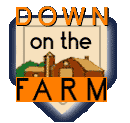|
|
|
|
 |
| ||
|
Scores Schedules Standings Statistics Transactions Injuries: AL | NL Players Weekly Lineup Message Board Minor Leagues MLB Stat Search Clubhouses | ||
| Sport Sections | ||
|
| ||
| Tuesday, August 8 | ||||||||||||||||||||||||||||||||||||||||||||||||||||||||||
| Jesus Colome Special to ESPN.com | ||||||||||||||||||||||||||||||||||||||||||||||||||||||||||
| REPORT FILED: AUGUST 4
The new format that we experimented with last week was popular, so from now on we will have one prospect report and some e-mail questions weekly.
I did Aubrey Huff of the Devil Rays last week, and while I would not normally do another Tampa Bay player for awhile, my plans were overtaken by events. I was going to do a profile on Jesus Colome of the Athletics, but he was traded to Tampa Bay for Jim Mecir. Since I received several inquiries about Colome after he was traded, I decided to go ahead and write him up. Readers should rest assured that I'm not planning on concentrating on the Florida teams to the exclusion of everyone else. It just happened that way.
Jesus Colome Tampa Bay Devil Rays Position: RHP Height: 6-2 Weight: 190 Born: 6/2/80
John M. writes: In light of Michael Cuddyer's poor performance this year at Double-A, do you now see him as something less than an A-prospect, or do you think this year has been a fluke or an insignificant bump in the road? I thought Cuddyer would break out this year, but he's been a pretty major disappointment, hitting .270 but with little power in Double-A. He's still very young, and his strike zone judgment remains good (48 walks, 70 strikeouts in 385 at-bats), so it's not like he's completely fallen flat on his face. But he's not nearly as productive as he was last year, and until he actually hits well in Double-A, you have to wonder. Another concern is his glove: he's made 30 errors, and we all know how Tom Kelly feels about guys who make defensive mistakes. On the other hand, if Cuddyer had accepted his scholarship to Florida State rather than signing with the Twins in 1997, he would have just been drafted this year. A college guy going straight to Double-A and hitting .270 with sound strike zone judgment, even without much power, would still be considered a good prospect. It is way too early to give up on Cuddyer, but we obviously have to cut his grade from where it was last year. Greg C. writes: With Scott Seabol having another fine season this year in the Eastern League, is he starting to look like a legitimate prospect instead of a one-year wonder? Seabol hit .315 with 15 homers in the South Atlantic League in 1999. This year he's hitting .293 for Norwich in Double-A, and has set a career-high with 19 homers. He's also played well defensively at third base, and with Drew Henson out of the picture in New York, Seabol may have a chance to supplant Scott Brosius at third base eventually. There are cautions. Seabol has never excited scouts: he was an 88th-round pick in 1996 from West Virginia, and it's safe to say that 88th-round picks aren't given a lot of slack as prospects. The bigger issue is age: he's 25, and this is his first year in Double-A. The fact that he's doing well there is a good sign of course, but it's not like he has a ton of development time yet. Seabol could become a good player, but he could also top out in Triple-A. The fact that he isn't an especially patient hitter is another possible negative. Richard S. writes: Will Marcus Giles get a chance to be the Braves second baseman eventually? He certainly deserves to. Giles is hitting .283 with 13 homers, 60 walks, and 20 steals for Greenville, with a solid .389 on-base percentage. He's always been able to hit, but the question was about his glove. He has worked hard to improve his defense at second base, and while he'll never be a gold-glover, he's at least adequate out there now and can flash above-average ability. Long-term, he'll make a fine player for someone. Whether it's the Braves or not, I don't know. It depends on what happens with Quilvio Veras. John Sickels is the author of the STATS 2000 Minor League Scouting Notebook. You can email your questions to him at JASickels@AOL.com. | ALSO SEE Down on the Farm archive  | |||||||||||||||||||||||||||||||||||||||||||||||||||||||||
